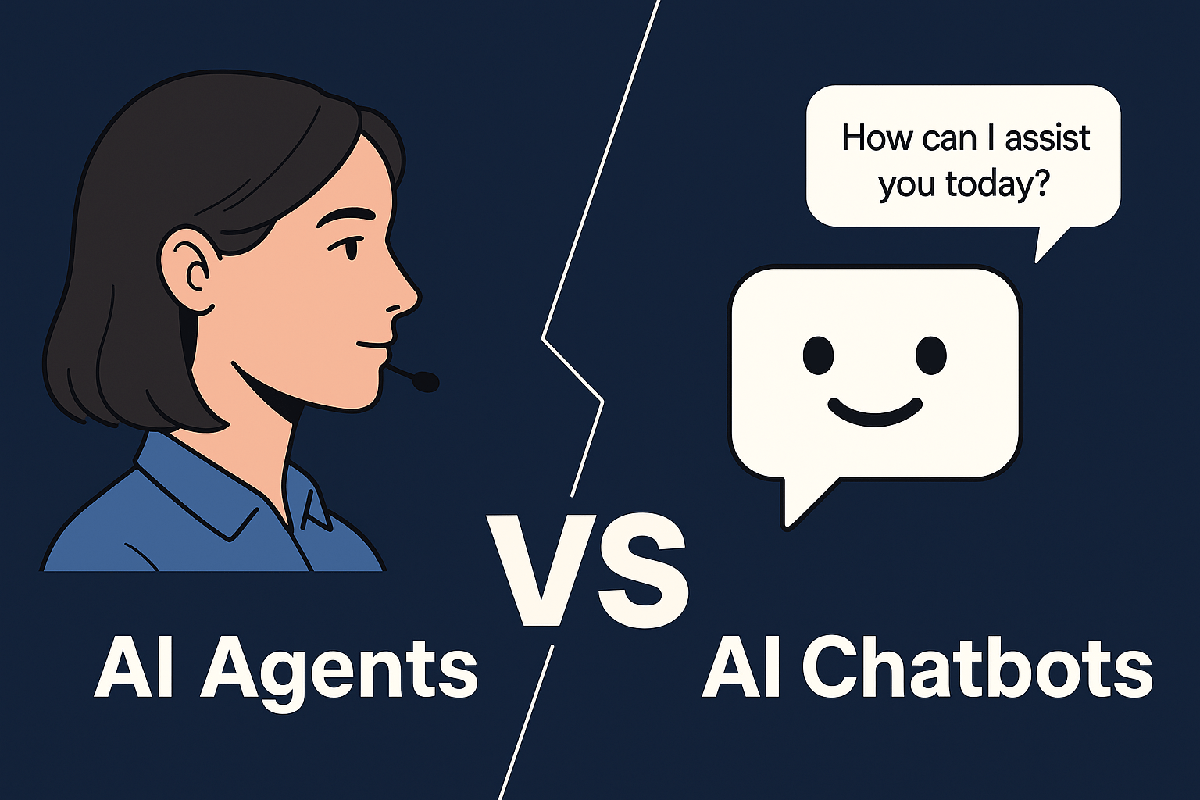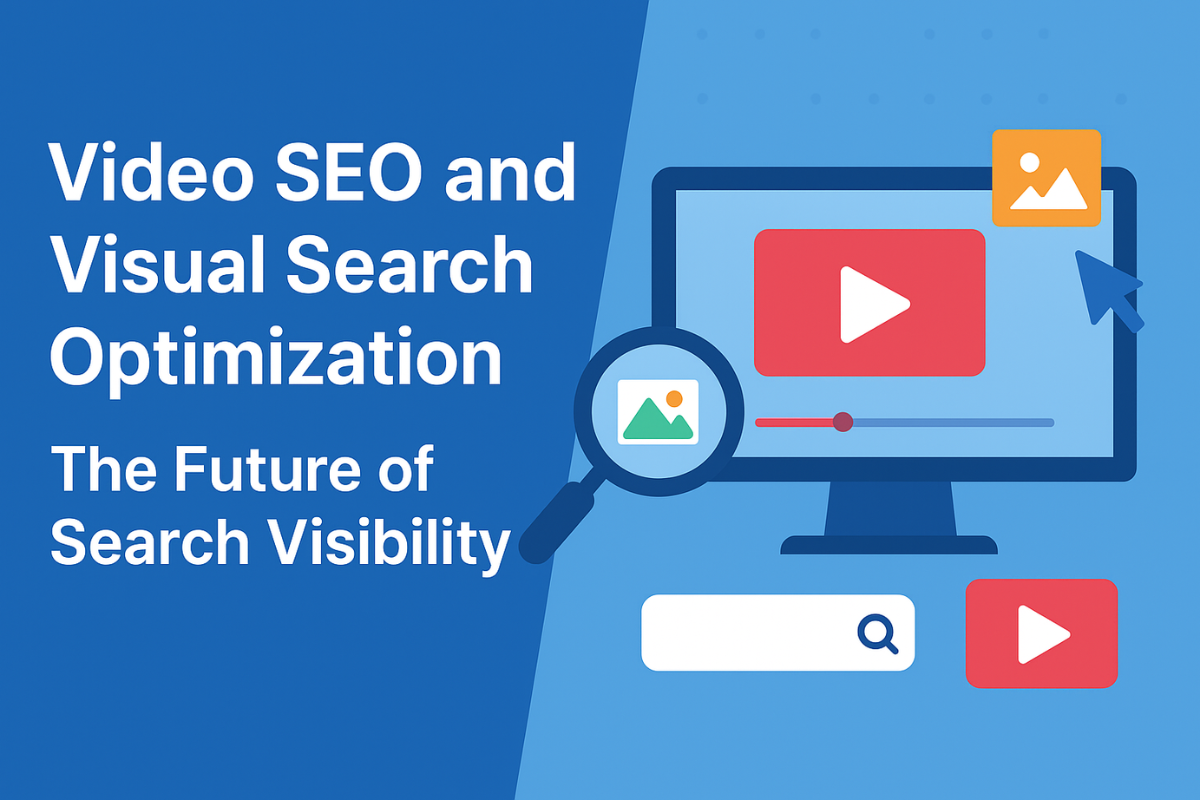In the evolving world of search, generative AI engines (such as Gemini, Claude, Perplexity, and others) are transforming how users query information—and how your content needs to compete. If you’re asking, “How to optimize content for generative AI?” — this article is for you. Below, I’ll share 5 actionable strategies to help you improve your visibility in generative search, and walk you through how to optimize for generative AI with expert-level transparency.
Why Generative AI Changes SEO (and Why It Matters)

Generative AI has completely reshaped how users interact with search engines — and how businesses must approach SEO to stay visible. In traditional search, Google or Bing acted as index-based engines: they crawled, ranked, and displayed pages that matched a user’s keywords. The user then decided which link to click.
Generative AI, however, does something radically different. Instead of showing ten blue links, these new systems — such as ChatGPT, Google’s Gemini, Perplexity, and Microsoft Copilot — generate a synthesized answer directly from multiple web sources. They combine facts, opinions, and examples from existing content to produce a conversational response, much like an expert summarizing key information on your behalf.
This fundamental shift means your content isn’t just competing for a click anymore — it’s competing for inclusion within an AI-generated response. To appear in those synthesized summaries, your content must be structured, credible, and semantically rich enough for AI models to understand and reuse.
From Keyword Matching to Context Understanding
In the pre-generative era, SEO focused heavily on keywords: using the right phrases, meta tags, and backlinks to rank high. But generative AI systems rely more on contextual comprehension. Instead of scanning for an exact keyword match, AI models try to interpret intent — the “why” behind a query.
For example, when a user asks, “How do I optimize my content for generative AI?”, a traditional search engine might surface a list of articles mentioning that phrase. A generative engine, on the other hand, reads across sources and produces a cohesive, step-by-step explanation. If your article clearly and naturally explains how to optimize for generative AI with accurate, well-structured insights, it’s more likely to be referenced or summarized.
This means semantic richness — the depth of your content, related terms, and internal link context — becomes far more valuable than sheer keyword density.
Why This Matters for Businesses and Content Creators
The implications for businesses and marketers are enormous. Generative AI is transforming how visibility works online:
- Zero-click behavior is increasing. More users get their answers directly from the AI result, skipping traditional clicks.
- Trust and expertise now outweigh keyword tactics. AI systems prioritize verified, credible sources that demonstrate expertise (E-E-A-T: Experience, Expertise, Authoritativeness, and Trustworthiness).
- Content formatting impacts inclusion. AI favors structured, concise, and scannable content that it can easily interpret and reassemble.
- Topical authority becomes the new currency. Sites with a strong, interconnected content ecosystem (pillar-cluster strategy) have a better chance of being referenced by AI engines.
In essence, the evolution toward generative search pushes everyone to think beyond SEO tricks and focus on SEO substance — crafting content that genuinely helps, informs, and earns trust.
If you understand how to optimize content for generative AI, you’re not just adapting to the latest algorithm change — you’re preparing your brand for the future of digital discovery. Businesses that master this early will enjoy sustained visibility, even as search behaviors evolve away from static result pages and toward dynamic, AI-generated experiences.
Now that we know why Generative AI is becoming a trend, let’s take a look at some strategies to raise your visibility in Generative AI.
1. Structure your content so it’s “digestible” by AI
Generative AI models often parse long pages by identifying sections, headings, and short paragraphs. Here’s how to design your content with that in mind:
- Use clear, hierarchical headings (H2, H3, H4)
- Begin each section with a short summary or “answer in one sentence,” then expand
- Use bulleted or numbered lists to present steps or takeaways
- Keep paragraphs short (2–4 sentences max)
- Include “block cues” like bold callouts or “Key takeaway:” lines
By designing content in modular blocks, you increase the chance the AI can pick and reuse your text as part of an answer.
For example:
Key takeaway: Always lead with the central idea in one sentence, then support it—this helps generative models extract the best snippet.
This format helps both human readers and AI agents quickly grasp your point.
2. Optimize Around Semantic Clusters and Topical Authority
If you truly want to understand how to optimize content for generative AI, you have to think beyond single pages or isolated blog posts. Generative engines, unlike traditional search engines, don’t evaluate your content in a vacuum. They assess how well your entire website communicates depth, breadth, and authority on a specific topic — and that’s where semantic clustering and topical authority come in.
What Are Semantic Clusters?
Semantic clusters are groups of related pages that together cover every angle of a particular topic. Instead of having one long article trying to do everything, you build a pillar page that serves as the central hub — like “How to Optimize Content for Generative AI” — and surround it with supporting cluster pages.
Each cluster page explores a subtopic in detail, such as:
- “How AI Uses Semantic Understanding in Search”
- “Best Content Structures for AI Summaries”
- “Optimizing Metadata for AI Indexing”
- “Building Authority for AI-Powered Search Visibility”
By interlinking all these pages strategically, you signal to generative engines that your site doesn’t just mention a topic — it owns it. This network of interrelated content helps AI understand your site’s expertise and makes your insights more likely to be surfaced in synthesized answers.
Why Semantic Clustering Matters for Generative SEO
Generative AI engines like Gemini, Perplexity, or ChatGPT’s Search Assistants pull from multiple sources when forming a response. They don’t rely solely on exact keyword matches; they rely on semantic signals — the meaning and relationships behind your content.
When your website covers a subject comprehensively through a semantic cluster, the AI sees a pattern:
“This domain provides consistent, in-depth information about this topic — it’s authoritative and trustworthy.”
As a result, your content becomes a preferred data source for AI-generated summaries.
In practical terms, that means if your site has an entire network of well-structured pages about generative optimization, you’re more likely to appear when users ask:
- “How do I optimize my content for generative AI?”
- “What are the best strategies for optimizing for generative AI?”
- “Why is generative optimization important for SEO?”
How to Build Topical Authority Step-by-Step
Here’s how to implement a semantic cluster strategy that strengthens your topical authority:
- Choose a Core Pillar Topic:
Start with a central question users ask — for instance, “How to optimize content for generative AI.” Your pillar page should provide a comprehensive overview, introducing the topic, summarizing subtopics, and linking to related posts. - Identify Supporting Subtopics:
Break down the subject into actionable sub-areas. Think of everything someone researching this topic might want to know: tools, best practices, metrics, real-world examples, or emerging trends. - Create Interlinked Cluster Pages:
Develop one dedicated post for each subtopic. Every cluster page should link back to the pillar page and to at least one other cluster page. This internal linking helps AI crawlers and models identify relationships and context. - Use Semantic Keywords and Entities:
Incorporate naturally related terms — such as AI search visibility, generative content optimization, LLM-driven search, AI summarization engines, and entity-based SEO. These help AI understand the deeper connections between your content pieces. - Update and Expand Regularly:
Generative AI learns from evolving information. By updating your clusters with new data, examples, and case studies, you show freshness and continued relevance — qualities AI models favor when generating new responses.
The Bigger Picture: From Topics to Trust
Search algorithms powered by generative AI don’t just reward who writes the most; they reward who explains the best. Building topical authority means your website demonstrates genuine expertise through consistent, interconnected, well-organized content.
When your pillar-cluster ecosystem covers an entire theme comprehensively, you send a clear signal:
“This brand is an expert source on how to optimize for generative AI.”
Over time, this credibility compounds. Your pages reinforce one another’s visibility, your site earns stronger E-E-A-T signals, and generative engines start surfacing your content more often — both in summaries and as direct citations.
Pro Tip: Use Structured Data to Support Your Clusters
Don’t forget the technical layer. Adding structured data (like Article, FAQ, or HowTo schema) to your cluster pages helps AI models understand what each page offers. It also makes your pillar content easier to interpret when AI engines are scanning for trustworthy sources.
3. Write for the User’s Question Intent, Not Just Keywords
One of the most important shifts to understand when learning how to optimize content for generative AI is that keywords alone no longer determine visibility. In the traditional SEO world, success depended on identifying a few high-volume keywords and weaving them naturally throughout your content. But in the age of generative AI search, intent is the new keyword.
Instead of matching words, AI models interpret meaning. They try to understand what the user really wants to know — the “why” and “how” behind their query — and generate a complete, conversational answer. This means your content must now mirror how real people ask and think, not just how they type.
Why Intent Matters More Than Ever
Generative engines such as ChatGPT, Gemini, and Perplexity are designed to provide contextual, human-like answers. When someone asks, “How do I optimize my content for generative AI?”, they’re not just looking for a definition — they want a practical, step-by-step explanation they can apply immediately.
If your article delivers that — by addressing intent, not just repeating the phrase — the AI is more likely to draw from your content when composing its response.
Think of it like this:
- Keyword-based SEO is about matching text.
- Intent-based optimization is about matching meaning.
So, rather than creating content that simply says “how to optimize for generative AI” multiple times, create content that answers every possible angle of that question:
- Why generative AI changes SEO practices
- How semantic clusters help with AI understanding
- What structure helps AI extract clear answers
- What metrics show improvement in generative search visibility
When you anticipate and respond to these layers of intent, your content aligns perfectly with the conversational nature of AI-driven results.
How to Identify and Write for User Intent
Here’s how you can tailor your writing approach to meet user intent effectively:
1. Start With the Core Question
Each major section or post should begin with a direct, conversational question your audience might actually ask. For example:
- “How do I optimize my content for generative AI?”
- “What are the best SEO strategies for generative search engines?”
- “Why does generative AI prefer structured content?”
This question-first approach helps AI recognize your content as a direct answer source.
2. Provide the Answer Immediately
After presenting the question, give a clear and concise answer right away — ideally within the first 2–3 sentences. Generative AI favors content that leads with clarity, since it makes it easier for the model to extract and summarize.
For example:
“To optimize your content for generative AI, focus on clarity, structure, and semantic depth rather than just keywords. AI models prioritize pages that explain complex topics in user-friendly ways.”
Once you’ve given the direct answer, expand on it with supporting evidence, examples, and insights.
3. Anticipate Follow-Up Questions
Users rarely stop after one question. They might next wonder, “How does generative AI read my content?” or “What format helps AI summarize information correctly?”
You can strengthen your content by anticipating those natural follow-ups and weaving them into your subheadings or paragraphs. This mirrors the way people interact with AI chatbots — through progressive questioning — and signals to generative models that your page provides complete topical coverage.
4. Use Conversational Language and Natural Flow
Since AI engines mimic human dialogue, they prefer sources that sound human too. Write conversationally — use “you,” “we,” and simple transitions that guide the reader smoothly through ideas. Avoid jargon when possible, or clearly define it.
For example:
Instead of saying:
“Generative AI utilizes neural networks to infer semantic meaning through token-level vectorization.”
Say:
“Generative AI uses advanced models that understand the meaning behind your words, not just the words themselves.”
This conversational tone makes your content more likely to be selected for inclusion in AI-generated summaries.
5. Add Contextual Depth
Generative AI rewards comprehensive understanding. Once you’ve answered the question, provide supporting context — such as examples, analogies, or comparisons — that make your explanation more useful.
For instance:
If you’re writing about how to optimize for generative AI, show the difference between keyword-focused and intent-focused writing with a before-and-after example. This not only helps readers but gives the AI more signals that your page provides depth and clarity.
How AI Evaluates Intent-Focused Content
When a generative engine analyzes your content, it looks for signals that match user intent:
- Clarity and conciseness: Does the content directly answer the user’s question early in the text?
- Contextual depth: Does it provide reasoning, examples, and explanations that support the main answer?
- Structural consistency: Are related subtopics linked together logically?
- Conversational relevance: Does the writing style sound like a natural response to a question?
Meeting these criteria helps your page rank not only in traditional search but also in AI-generated results, where content inclusion depends on both accuracy and readability.
Example: Intent-Based vs. Keyword-Based Optimization
Let’s see how this plays out in real writing.
Keyword-focused paragraph:
“To optimize content for generative AI, you must use generative AI optimization strategies. Generative AI optimization is about optimizing for AI-generated search results.”
This paragraph technically includes the keyword, but it tells the reader nothing.
Intent-focused paragraph:
“Optimizing your content for generative AI means understanding how these models interpret meaning. You’ll need to write clearly, structure your information with headings, and explain concepts in a way that’s easy for both humans and AI to process.”
The second example provides clarity, fulfills intent, and is far more likely to be included in an AI-generated answer.
The Takeaway
To master how to optimize content for generative AI, you must write like you’re speaking to both the user and the AI assistant answering their question. Focus on the user’s real intent — the why, how, and what next behind their search — and build your content around those needs.
When your writing anticipates questions, uses natural language, and delivers direct, actionable insights, you’re no longer just ranking for a keyword — you’re earning a place in the conversation that generative AI has with your potential audience.
4. Use Signals of Authority and Trust (E-E-A-T)
If you’re serious about learning how to optimize content for generative AI, one concept you can’t overlook is E-E-A-T — Experience, Expertise, Authoritativeness, and Trustworthiness. Originally introduced by Google’s Search Quality Evaluator Guidelines, E-E-A-T has now become even more critical in the generative search era.
Generative AI models like Gemini, ChatGPT, and Perplexity don’t just look for relevant words; they look for credible voices. These systems are trained to detect and rely on sources that show strong signals of trust and expertise. If your content lacks transparency, depth, or validation, AI may simply skip over it — even if it’s well written.
That’s why, when you’re thinking about how to optimize for generative AI, you must go beyond traditional on-page SEO and demonstrate real authority in your field.
Why E-E-A-T Matters in Generative SEO
Unlike traditional search results, where users can see ten blue links and decide for themselves which source to trust, generative AI models choose for them. When a user asks, “How do I optimize my content for generative AI?”, the AI isn’t going to show a list — it’s going to summarize.
That summary might only cite one or two trusted sources. If your content consistently demonstrates strong E-E-A-T signals, you increase your chances of becoming one of those cited or referenced sources.
In other words, in the generative world, E-E-A-T is your new ranking currency. It determines not just if your content appears, but whether AI trusts you enough to use your information at all.
Breaking Down the “E-E-A-T” Framework for Generative Optimization
Let’s look at how each pillar of E-E-A-T can strengthen your visibility in generative search.
1. Experience
Show that your insights come from real-world involvement. Generative models prefer content that sounds like it’s written by someone who has actually done the work, not just studied it.
- Add real examples, case studies, or personal observations.
- Use first-person or brand-voice storytelling (“At our agency, we tested X and saw Y result”).
- Include photos, screenshots, or data visuals from real projects.
When AI encounters these specific, experience-based signals, it categorizes your content as authentic and useful — a quality that boosts its inclusion potential.
2. Expertise
Generative AI systems cross-reference multiple sources to gauge credibility. Content that highlights subject-matter expertise — through depth, precision, and author credentials — gets prioritized.
- Include author bios that highlight qualifications, certifications, or professional experience.
- Reference trusted external sources, industry reports, and white papers.
- Use technical yet accessible language to demonstrate mastery without alienating readers.
This combination signals to AI that your page isn’t generic filler — it’s expert-driven content.
3. Authoritativeness
Authority develops over time. It’s built by consistently publishing accurate, relevant, and interconnected content on your niche topics.
To build authority around how to optimize content for generative AI, for instance:
- Create a pillar page on the subject and link it to supporting cluster articles.
- Earn backlinks from reputable sites in digital marketing, AI, or SEO.
- Participate in collaborations, webinars, or interviews where your brand is referenced as an expert source.
Generative AI models are trained on a mixture of publicly available data, citations, and brand mentions — so the more your name or domain appears in credible contexts, the more likely AI will identify you as authoritative.
4. Trustworthiness
Trust is the foundation of E-E-A-T and often the deciding factor for inclusion in AI-generated content. If the AI detects inconsistent, vague, or manipulative signals, it will deprioritize your site.
Ways to strengthen trust:
- Maintain transparency: list your sources, include publication dates, and disclose affiliations.
- Use HTTPS security, clear contact pages, and privacy policies.
- Keep your content updated and fact-checked — stale or outdated content can trigger AI to skip your page.
- Encourage user reviews or testimonials (especially for businesses) as they add social proof.
When your site is technically sound, accurate, and transparent, it sends a clear message to both users and AI: “You can trust this information.”
How to Implement E-E-A-T in Generative SEO Practice

If you’re figuring out how to optimize for generative AI, here’s a practical way to apply E-E-A-T directly to your content strategy:
- Show the Human Behind the Content
- Add detailed author bios with credentials, awards, or experience.
- Use bylines instead of “admin” or “team” posts.
- For brand content, highlight your company’s mission and values.
- Add detailed author bios with credentials, awards, or experience.
- Provide Verifiable Sources
- Link to authoritative external sources to back up claims.
- Cite data, research, and statistics with transparent attribution.
- Add reference lists at the end of major guides or pillar pages.
- Link to authoritative external sources to back up claims.
- Include Proof of Real-World Application
- Integrate examples, screenshots, or metrics from actual client projects or campaigns.
- Share case studies that show measurable outcomes.
- Integrate examples, screenshots, or metrics from actual client projects or campaigns.
- Keep Everything Updated
- Review key posts every 3–6 months to refresh statistics, links, and references.
- Add “Last Updated” dates to signal freshness.
- Update your structured data markup (Article, FAQ, or Author schema).
- Review key posts every 3–6 months to refresh statistics, links, and references.
- Be Consistent Across Channels
- Make sure your brand tone, expertise, and message align across your blog, LinkedIn, and website.
- This consistency builds reputation — something AI models detect through repeated cross-channel mentions.
- Make sure your brand tone, expertise, and message align across your blog, LinkedIn, and website.
How Generative AI Detects Trust Signals
AI models don’t “see” websites like humans — they evaluate patterns. Here are the kinds of trust signals they’re tuned to recognize:
- Frequent association with expert sources or authoritative domains.
- Consistent factual accuracy across multiple pieces of content.
- Clear author attribution and verifiable identity.
- Transparent citation structure and updated timestamps.
- Minimal promotional bias (AI often deprioritizes overly sales-driven content).
By integrating these signals, you help AI distinguish your content as reliable and worthy of inclusion when generating summaries or recommendations.
The Payoff: From Trust to Visibility
When your content consistently reflects experience, expertise, authority, and trustworthiness, you’re not only appealing to human readers — you’re also training generative AI systems to view your domain as a credible data source.
That’s how you move from being “just another article online” to being one of the few sources generative engines choose to summarize or cite.
In the new search landscape, trust isn’t optional — it’s the ranking signal that determines whether your content is read by real people or synthesized by AI into the world’s next answer.
So if you’re wondering how to optimize content for generative AI in 2025 and beyond, remember: visibility now depends on authority as much as on optimization. Build credibility into every part of your strategy — from author transparency to data-backed insights — and you’ll not only earn higher rankings but also long-term trust from both users and machines.
5. Monitor performance and iterate with AI-centric metrics
Optimizing for generative AI isn’t a one-time task. You need to treat it like ongoing experimentation. Here’s how:
- Track generative engagement signals
- Use tools or logs to see where your pages are referenced by AI agents
- Monitor if fragments of your content appear as answers in AI platforms
- Use tools or logs to see where your pages are referenced by AI agents
- A/B test alternative phrasings
- Rewrite the same content with different intros or summaries
- See which version gets picked up more often
- Rewrite the same content with different intros or summaries
- Refine your “hook” sentences for snippet eligibility
- Start with the answer first, then expand
- Use variations and test
- Start with the answer first, then expand
- Re-optimize content periodically
- Refresh data, examples, and sources
- Add new insights
- Rebalance internal and external links
- Refresh data, examples, and sources
- Watch for generative AI SEO tools
- Some platforms now show “AI answer preview” to help you see how your content might be used
- Use them to predict whether you’ll be surfaced
- Some platforms now show “AI answer preview” to help you see how your content might be used
Practical Example: Optimizing a Topic Page
Let’s run a quick example of applying all five strategies to a topic page entitled “10 Best Practices for Generative AI Content”.
- Structure for digestibility
- H2: Best Practices Overview
- H2: Practice #1 → #10 (each with summary + details)
- Bullets: “Do / Don’t” lists
- H2: Best Practices Overview
- Cluster support & linking
- Link from your generative optimization pillar page
- Link outward to cluster posts on prompt design, data signals, update cadence
- Link from your generative optimization pillar page
- Intent-focused phrasing
- H3 questions like: “Why should I refresh content for generative AI?” or “How do summaries help generative agents?”
- Answer them in conversational tone
- H3 questions like: “Why should I refresh content for generative AI?” or “How do summaries help generative agents?”
- Authority signals
- Cite case studies or experiments
- Show author expertise or credentials
- Mark schema for FAQs
- Cite case studies or experiments
- Performance & iteration
- After publishing, monitor if your section “Practice #3” is pulled into AI summaries
- Try alternate versions of the intro or hook sentence
- Update examples annually
- After publishing, monitor if your section “Practice #3” is pulled into AI summaries
Over time, the page becomes a strong node in your generative optimization network.
Common Pitfalls & How to Avoid Them
| Pitfall | Risk | Solution |
| Keyword stuffing or unnatural phrasing | AI can penalize or ignore content that feels artificial | Write naturally, use keywords sparingly, focus on user utility |
| Static, “set it and forget it” content | Gets outdated; loses relevance | Schedule periodic refreshes and versioning |
| No internal linking or isolated pages | Weak topical authority | Build strong clusters and interlink |
| No authority signals or transparency | AI may view the content as less credible | Add author bios, publish credentials, cite sources |
| Ignoring generative metrics | You won’t know what content is working | Instrument tracking; adapt based on data |
Bringing It All Together
To recap:
- Strategy 1: Structure your content in digestible blocks
- Strategy 2: Use semantic clusters and internal linking to build authority
- Strategy 3: Write to answer natural queries (e.g. How do I optimize my content for generative AI?)
- Strategy 4: Reinforce E-E-A-T signals through citations, transparency, and credentials
- Strategy 5: Monitor, test, and iterate with AI-centric metrics
These five strategies work together: better structure helps AI extract, cluster strategy gives depth, conversational tone matches intent, authority signals build trust, and iteration ensures longevity.
When you consistently apply these principles across your site, you’re not just optimizing for generative AI — you’re future-proofing your content for whatever search evolves into.
Next Steps & How We Can Help
If you want to take action today, here’s how to get started:
- Run an audit on your top-performing pages: check headings, hook sentences, internal linking, and authority signals.
- Choose 1–2 pages and rework them with the structure and phrasing strategies above.
- Track their performance in generative engine previews or via logs to see if your content is being surfaced.
- Gradually build clusters around your core topic and interconnect.
- Repeat this cycle monthly or quarterly.
If you’d rather work with a partner who specializes in content optimization for generative AI, we offer tailored audits, writing services, and ongoing strategy aligned precisely to this new search paradigm.













